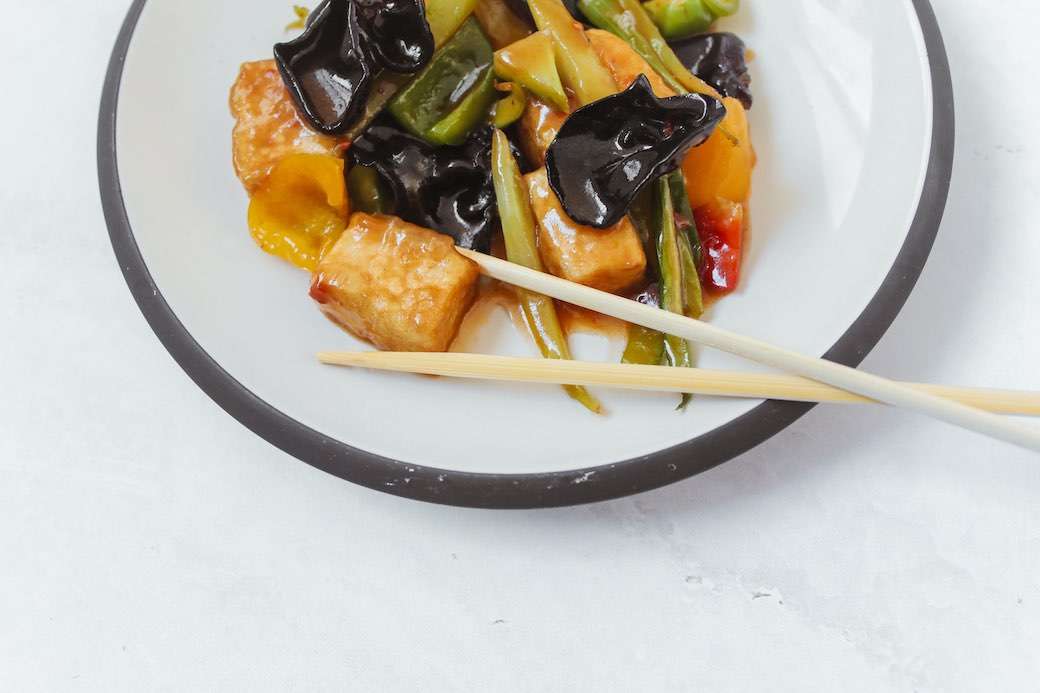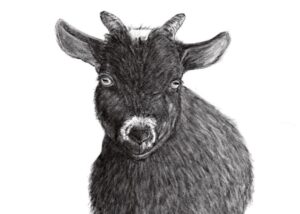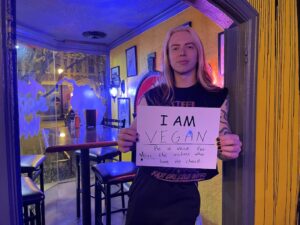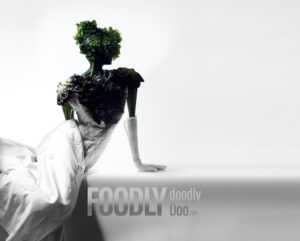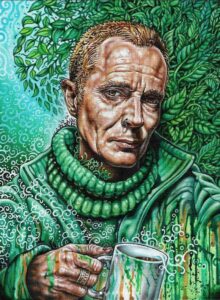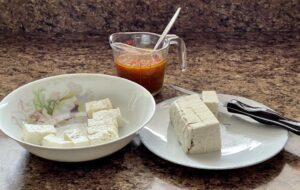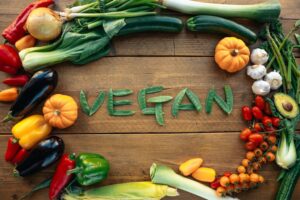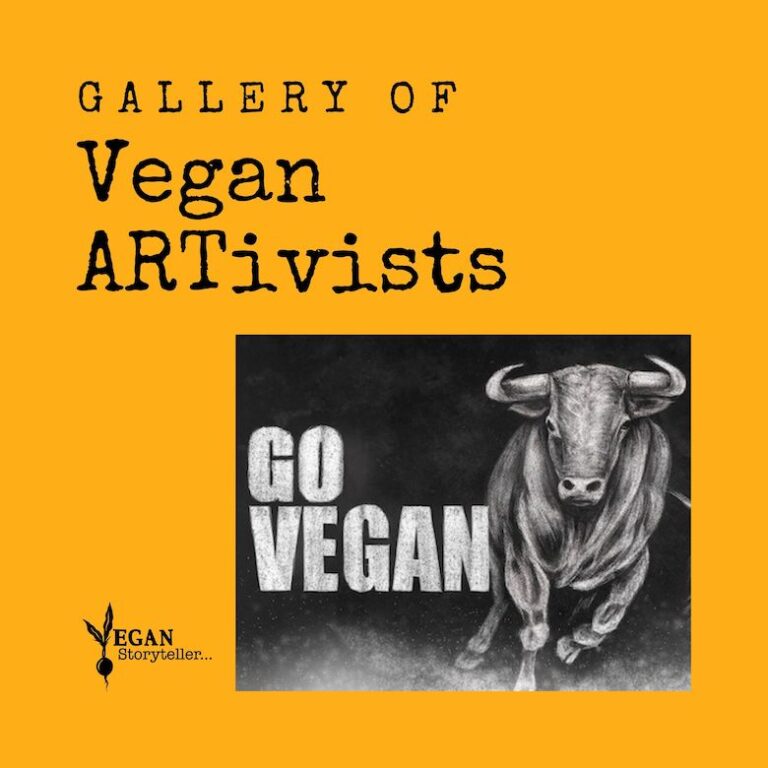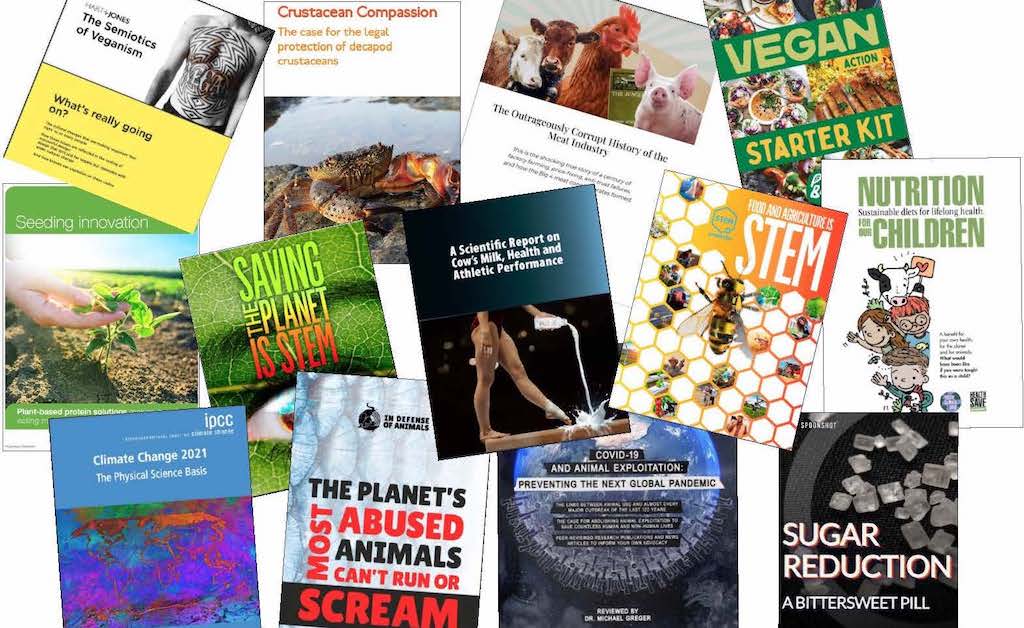By Ruha Thevi
The subject of “plant proteins” and, more specifically, of “protein content in our food” fuels big arguments and disagreement between the omnivore and the plant-based communities. In fact, the fear of lack of proteins, might as well be the #1 deterrent for most people to switch to a healthier plant-based diet.
There are two main questions that generally go unanswered, creatng a lot of confusion out there.
- The first is, are plant-proteins as good for our body as the animal-proteins?
- And, can a plant-based diet deliver enough proteins?
We are going to shed light on the topic here, in a simple and counter-intuitve way.
What are proteins?
Let’s start from the beginning: what are proteins?
Proteins are chains of amino acids. Imagine a necklace made of a number of pearls, tied together on a thread. Pearls are the building block of the necklace. Or imagine a child’s Lego construction, made of a number of little bricks put together in an organized manner to form a specific structure – a castle, a vehicle, a dragon. These little Lego bricks are the building blocks of that structure. Amino Acids are the the building blocks of proteins.
On this whole planet of ours, there are just about 20-21 amino acids. Both the plant-proteins and animal-proteins are made of the very same amino acids.
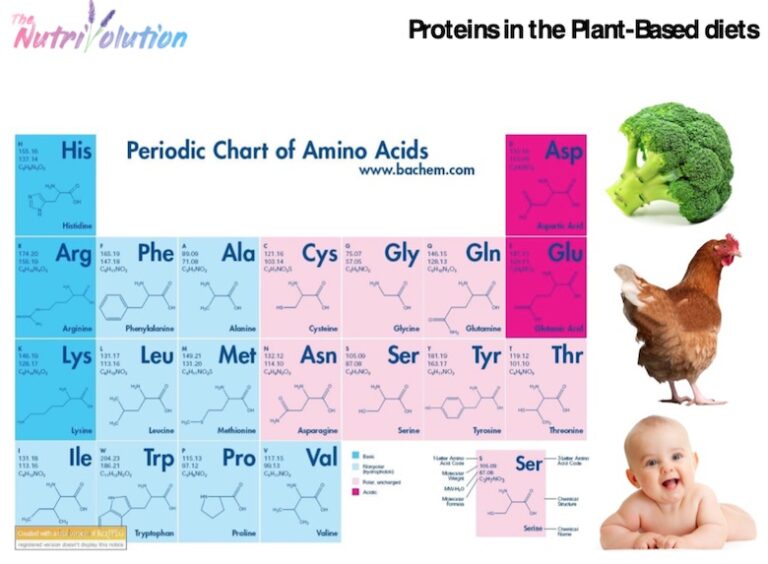
Difference between animal-proteins and plant-proteins
The difference between an animal-protein (egg, chicken, cow) and a plant-protein (broccoli, legumes, mushrooms) is just about the different combination of amino acids, as well as the size and complexity of the whole protein structure.
In other words, we can take some pearls of different size and color (the different amino acids), and we can choose to make a necklace, or a bracelet, or a pair of earrings – different pearls (amino acids), different type of product (protein).
In the plant-protein, the amino acids are organized in smaller chains and are glued together via simple bonds. On the contrary, in the animal-protein, these chains are longer and more complex. So, which type of protein does our body need? Neither! Our body does not need any proteins from the plant world, nor from the animal world.
This is an important concept to understand.
Imagine placing on a table three different puzzles. One is the picture of a plant; another is the picture of an animal; the third is the picture of a child. Can you take out any pieces from the plant-puzzle or the animal-puzzle and fit them into the child-puzzle? Can you switch these pieces as you please?
No, because they belong to different puzzles, and they just don’t fit. That is to say, even if the three types of proteins are made of the same building blocks, still the human-protein is different from the animal-protein, which is again different from the plant-protein. Neither plant nor animal proteins would fit directly in a human body.
This is where our digestive system comes into play. It will receive
the proteins that we deliver to our body via our food. It will break them down to the single amino acids and use these amino acids to build “human” proteins – human tissues, human skin, human muscles, human organs and so on.
The body breaks down plant proteins easier than animal-proteins
Our digestive system is all about balancing inputs and outputs, costs and benefits. Just like in a business, the body invests energy into the digestion process, and it expects to yield the highest amount of nutrients – amino acids, in this specific case. The animal proteins, we already mentioned, have a complex structure, much more complex compared to that of plant proteins.
This results into less efficient digestion, and a lower amino acid availability for the body. Plant proteins have a simpler structure, and the body finds it easier to break them down. Less energy spent for digestion means more amino acids that are available in our system.
Plant proteins and animal proteins are made of the very same building blocks, amino acids. The difference is that, thanks to their simpler structure, the plant proteins allow easier and faster digestion, resulting in a much higher availability of amino acids for the body, and less undigested food – the same undigested food that can rot and turn into toxic waste within the body, giving way in the long term to inflammation and disease.
How much protein do we really need?
Really, how much protein to we need? Basically, as little as 0.8 grams of proteins, per kilogram of body mass, per day. Or less, if we have a sedentary lifestyle. The formula is as follows:
Protein Daily Requirement (grams) = [Body Weight (kg)] x 0.8
With this formula, we can calculate that a person who is 60 kg in weight, will need approximately 48 grams of protein (60 x 0.8) per day. A person that is 75 kg in weight will need approximately 60 grams of protein (75 x 0.8) per day. Is it possible to find all that protein, in our food? Where and how? If we just take a look at the tables below , we can see how much of protein is available for every 100g of the various foods we usually 2 consume.
At the bottom of each table, for each category of foods, we have stated the average content of proteins for the single category.
Click here for a metric conversion calculator.
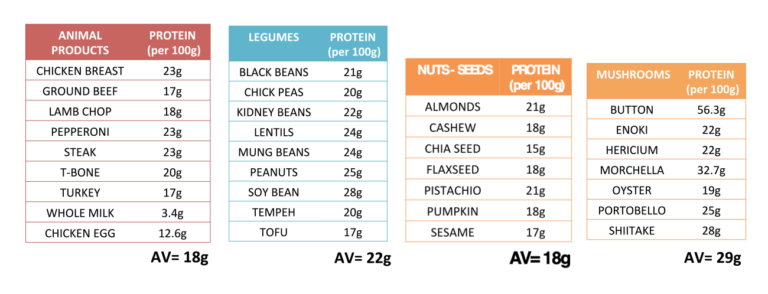
Choosing the right foods for proteins
This is all about knowing our food, and choosing the right food for our diet.
Plant proteins, like nuts and seeds (which we should consume in very small amounts due to the high-fat content) on average, can deliver the same proteins as animal products.
Legumes can deliver even more proteins than animal products. One thing that most people do not know is that mushrooms are packed with proteins and can deliver up to 50% more proteins, in weight, compared to any other animal products.
In practical terms, talking about the food on the table, we can see that 300 grams worth of meat will deliver approximately 54 grams of proteins (300*18%) – our daily requirement!
But if we switch to plant-based products, we can find the same amount of protein in a 250-gram portion of legumes (250*22%); or even in less than 200 grams worth of mushrooms (200*29%).
In other words, if we eat in a day, over one or more meals, a small bowl of brown rice, a mix of fresh vegetables, a fistful of legumes and mushrooms – we have already satisfied our daily requirement for proteins.
Not only that, these foods will also deliver a lot of vitamins, minerals, water, and fiber for a healthy, balanced, system-friendly diet.
Give the plant-based diet a try
These are just a few of the many reasons why we should embrace the plant-based diet. But if you feel that you are not ready yet to give up completely the animal products in your diet, that is OK.
Still, try to reduce to the minimum the number of animal products in your diet (which contain more fat, fewer nutrients, less water, and fewer fibers) to increase the consumption of fresh fruits and vegetables (rich in water, fibers, vitamins, minerals, as well as good carbs, good proteins and good fats).
We invite every reader to eat plant proteins and give the plant-based diet a try. Try it for 2-3 weeks and you will feel the benefits. A properly balanced plant-based diet will really work for the body, and make the body shine for you.
So, set aside any prejudice, and just go for it!
Ruha founded the movement “Nutrivolution” and is the author of Naturally Dietstyle.
“Mother Nature has prepared the most amazing recipes for us — fruits and vegetables packed with the right amount of energy, and the perfect quantity and combination of nutrients.” Ruha Thevi is a nutritionist, master herbalist, author, vegan, and whole plant-based advocate with Nutrivolution. She explains why she avoids processed foods in her diet.

Read next: Foods with no nutritional value don’t benefit our bodies. Eat fruits and vegetables.

